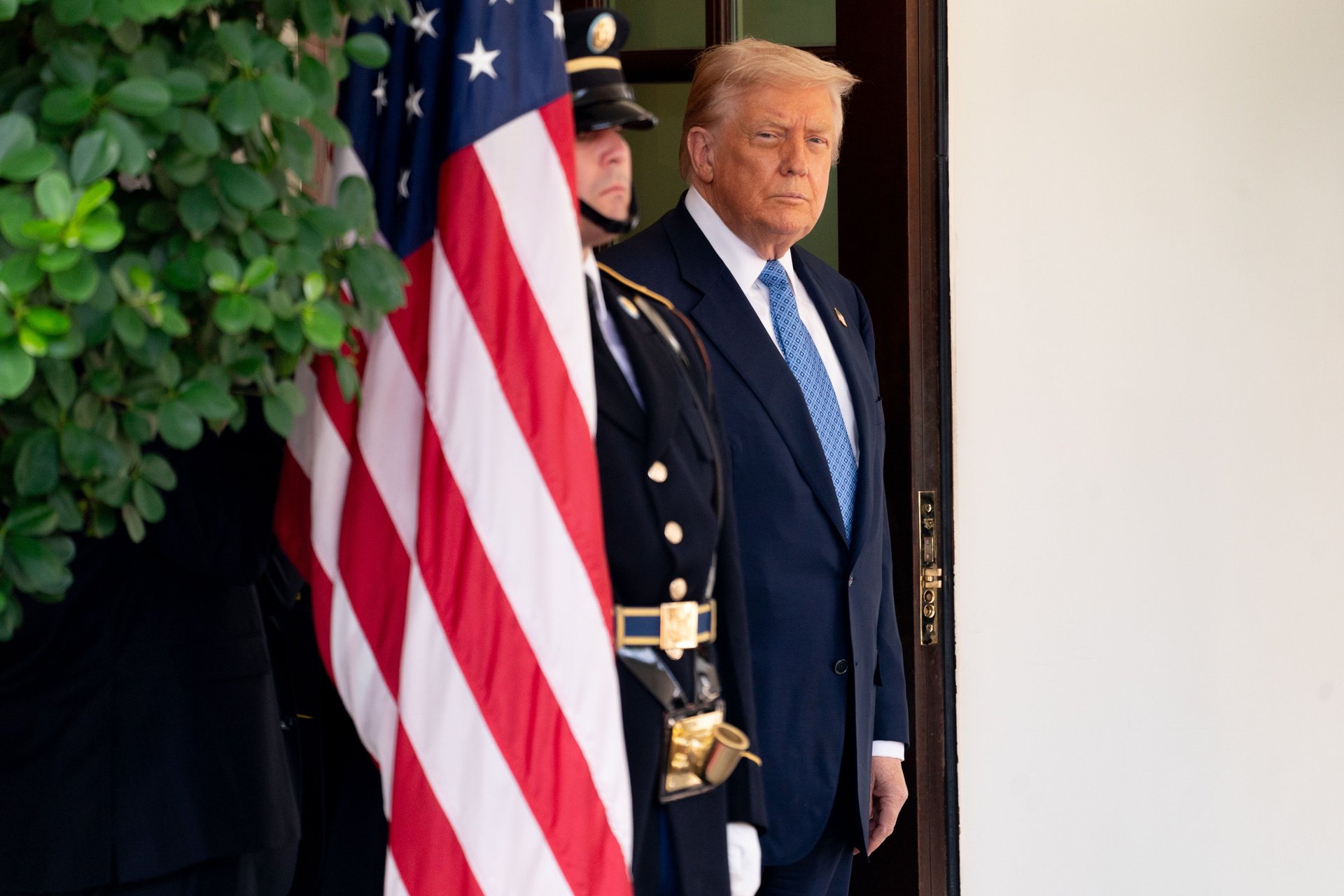Trump has reportedly delayed slapping steeper tariffs on China yet again
China and the U.S. are still attempting to negotiate a broad trade agreement that would avert triple-digit tariffs on each other

US President Donald Trump at the White House in Washington, DC, US, on Aug. 8, 2025 (Stefani Reynolds/Bloomberg via Getty Images).
President Donald Trump reportedly signed an executive order to extend a pause on Chinese products for another 90 days, buying more time for Washington and Beijing to iron out a sweeping trade deal.
Suggested Reading
CNBC first reported the development. It would be the second time that Trump renewed the pause, a sign there are still major obstacles to overcome before a major trade accord is finalized. Earlier in the day, the president had signaled that negotiations between the U.S. and China were on a sturdy, positive path.
Related Content
"We've been dealing very nicely with China," Trump said during a White House news conference. "As you probably have heard, they have tremendous tariffs that they're paying to the United States of America ... The relationship is very good with President Xi and myself."
The White House did not immediately respond to a request for comment.
If confirmed, the pause will provide additional runway for negotiators to keep pursuing a trade deal without the threat of retaliatory tariffs in the short-term. U.S. officials are pushing to shift the Chinese economy from one that relies on manufactured exports to one powered by household consumption.
On Sunday, Trump said in a social media post that the Chinese government is anxious about a scarcity of soybeans and urged them to quadruple their purchases of U.S. soybeans to resolve the shortfall. He added the move would shrink China's trade deficit with the U.S., long a source of frustration for Trump.
“China is worried about its shortage of soybeans,” the president wrote on Truth Social in a message addressed to Chinese President Xi Jinping. "Our great farmers produce the most robust soybeans.”
Trump has previously mused about meeting with the Chinese leader in the event of a trade deal getting locked in.
Three rounds of formal negotiations in Geneva, London, and Stockholm between U.S. and Chinese officials have yielded partial progress and agreements to keep dealing with each other. It's also been punctured by tit-for-tat responses. At one point, Beijing limited the export of rare earth minerals to the U.S., causing Washington to revoke and restrict visas for Chinese students. Currently, the U.S. has kept a 30% tariff on Chinese products while China maintains a 10% import tax on U.S. products.
After the Stockholm chapter of negotiations, some Trump administration officials expressed confidence there was progress towards a larger deal and said a longer tariff pause seemed appropriate. Treasury Secretary Scott Bessent, one of Trump's trade emissaries, said the final decision would be up to Trump on whether the pause was extended.
